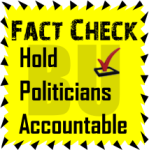Submitted by Looking Glass
Economic theories of recession tend to focus on particular aspects of the problem and assume rationality. Financial history tells us that recessions are not new and will continue to occur. Like stock market crashes they all have to do with finance: the rise and fall in value of assets. The current global recession is not really a consequence of increasing interest rates and rising inflationary pressures but appears rooted in the real estate collapse and its interlinkages with the credit market.
Politicians propose and put in place policies to prevent recessions. But not infrequently such policies, though well intentioned, have had devastating consequences. Something is suspect about a solution which is always considered logically correct despite the problem.
The Wall Street crash of 1929-32 led the automobile industry to lay off ½ of its workforce. The unemployed gathered at the Ford plant to request unemployment relief. A scuffle occurred with security in which five were killed. This led to the building of homes in the eight mile district on one side of the “WALL.”
The US government as part of the New Deal Reform—Fannie Mae and later Freddie Mac in 1981— underwrote the mortgage market, and by reducing the monthly cost facilitated the explosion of home ownership. But the homes were not for everyone. To qualify for loans from the Federal Housing Authority developers built homes in Detroit on the white side of the WALL. Blacks were deemed to be predominately uncredit-worthy and denied property ownership. The few who could afford it had to pay higher interest rates and meet other requirements. Government policy, in this case credit, separated the city by colour/race, later the country by credit rating and the Prime and Subprime as we know it today
Blacks exclusion from home ownership led to the civil rights struggle and rioting in 1967 during which homes were damaged or destroyed and 43 killed. Later the government took over the properties being built on the wrong side, the black side of the Wall. Excused from credit worthiness blacks were offered incentives including more accessible loans. Mortgage lenders offered all kinds of deals to borrowers the vast majority of whom were renters and Subprime. After 1981 mortgages moved from a fixed 30 year term to low interest only rate payments and shorter duration.
Houses became commercial assets promoted by the real estate market as an investment. In the interim manufacture (value added) which had been in decline for at least the last 40 years was replaced by a largely unregulated finance industry which unlike manufacture created few jobs. The economy became guided not by the business cycle but by the consumer cycle.
Liberal lending practices also gave birth to Securitization. Subprime lenders sold the loans to banks who split, bundled and repackaged them, had them rated AAA and sold them at home and abroad. Securitization and the credit market fed the global crisis. By 2003 the USA had accounted for 90% of worldwide securitization issuance.
Total volume of mortgage by government agencies grew from $370 bn in 1985 to $2.5 trillion in 2000 and was estimated to top $4 trillion in 2007 (Bad Money 115). People bit off more than they could chew, but the model worked well as long as people had jobs, interest rates remained low, property values continued to rise and the market self-corrected. But this was not the case. The percentage of household disposable income spent on debt service—credit card debt, car loans etc.—rose appreciably and weakened the masses. Home owners were indeed vulnerable to changing economic times, rising interest rates and other costs. But in case of default and foreclosure the lenders deficits were guaranteed even if the banks went bust.
The housing sector — mortgage finance but construction, furnishing, lumber and related industries — together represented ¼ of the GDP and unemployment. So the real estate slump was sure to foster significant dislocation. The Subprime market soured in 2007 sending shockwaves throughout the financial markets and worldwide. In 2008 Fanny Mae and Freddie Mac was nationalized to avoid collapse of the mortgage market. It cost the surviving institutions millions.
Government fiscal policy and liberal lending practices created the Prime, Subprime and securitization which fed the global crisis. Subprime loans led to default and foreclosure, the induced s credit crunch led to the stock market crush, and securitization fed the global crisis. But it is not over yet. Last year one in 45 households received a foreclosure filing. Today about one in five home owners with a mortgage owe more that their home is worth. And most banks have resumed their eviction process. The worst is yet to come.
The recession is a reminder that even if deviations are random markets do not self-correct or tend toward equilibrium
PS: Does the government really intend to support certain interests in the by-election as presently constituted? Fallacy in Shoddy Robes asked if they were things to hide or kept hidden. As you now very well know some Candles Under The Bed are no longer hidden. It is not too late to change ‘strategy.’ When it rains it pours. Stay tuned.



















Pingback: Tweets that mention The Subprime Recession | -- Topsy.com
The sad thing about the subprime issue is that the world has not learned its lesson. The reckless lending continues in the USA and Europe the two regions responsible for the financial mess we find ourselves.
But recessions are cyclic in nature so unless they change the law it will just continue until some time in the future when the next one happens and they say enough is enough and change laws
David:
Check out Hyman Minsky.
This is not a cyclical depression, it seems terminal.
No apparent way up.
2% growth predicted this year, with 4-6% actual devaluation of our dollar against world currencies.
That is the price gouging par excellence and it is what our Govt needs to get us out if this hole, but they will not admit it.
The only way to repay our debts is for us to devalue, or continuing to cling on to the ongoing devaluation of the US$.
Of course we like it so, and will ride Uncle Sam’s coat tails ‘ til our dollar exchange once again becomes attractive to tourists, no matter that Bajans may be priced out of the world food market.
It was bleedingly obvious the bubble was about to burst. Property values couldn’t continue to grow exponentially. Commission based sales hyped up house prices big time. Anyone with eyes could see that the shit was about to hit the fan when loans were bulked up and sold on as collateral based debt instruments, and shady low life mortgage brokers started churning out the maximum possible amount of loans to anybody and everybody.
What this financial crisis has ensured is that countries like Barbados that would have built a little ‘capacity’ in the boom years has had it smashed to smithereens in the last 2 years. Cap in hand we will continue to go.
@BU.David: “Cap in hand we will continue to be.
With respect, please don’t even try to play that benign crap…
We all *KNOW* each other. Let us please try to not to pretend otherwise.
Here is snippet of what many are calling the Minsky crisis to follow Straight Talk’s comment:
And, suddenly, we all find ourselves down the “wabbit” hole.
Have fun….
@BU.David: “Here is snippet of what many are calling the Minsky crisis to follow Straight Talk’s comment:
Just wondering…
Is there any chance you might enter the modern world?
And quote something later than the 20th century?
On the home front it was interesting to read Professor Michael Howard’s criticism of Governor Delisle Worrell’s optimistic forecast of the Barbados economy. He believes it is too early to have put out the statement.
Ever heard of problem, reaction, solution?. It is a theory used by some to suggest that others have an agenda for which they knowingly create a problem, wait for the inevitable reaction from the public and then offer us the solution, which was always the basis for their agenda. We are the ones who have/are being primed for a solution that we will embrace with open arms, even as it makes us even greater slaves(working classes) or servants(middle class) to the truly rich and heartless.
The suggestion for this ‘Solution’ to our crisis has already being whispered and quietly postponed. Those with the agenda realise that we are not yet hungry enough, not yet angry enough, not yet desperate enough. They need history to record that we accepted this solution, that their was little choice, that the only way to save our financial system, our jobs , our homes, democracy and freedom from tyranny, is to grasp at this straw. Why do you think bank executives are being given unprecedented bonus’? It is because they have done exactly what they they are meant to do.
Those with an agenda want us to hate the banks, distrust them. They require that we hate the inequity in the financial markets and the whole free trade movement.
It will make it easier for them to increase the volume of their whisper of a solution, they already know that all the so called expert economist that have been so greatly discredited in this crisis, will jump on nearly any bandwagon to save face.
Check it out for yourself, isn’t the answer………..
One world currency, one world bank.?
Peace.
Well the governor based prognosis is based on so many conditionalities for the growth that an optimistic forecast can deem a bit fool hardy until some information is know for sure and some conditionalities removed. Same as me saying I expect cancer to be eliminated this year if they mapped the human genome and identified all dna strands that cause cancer and find a nanotechnology to deliver the cure to only to trouble areas. We done one out of three doesn’t mean we get the other two done this year.